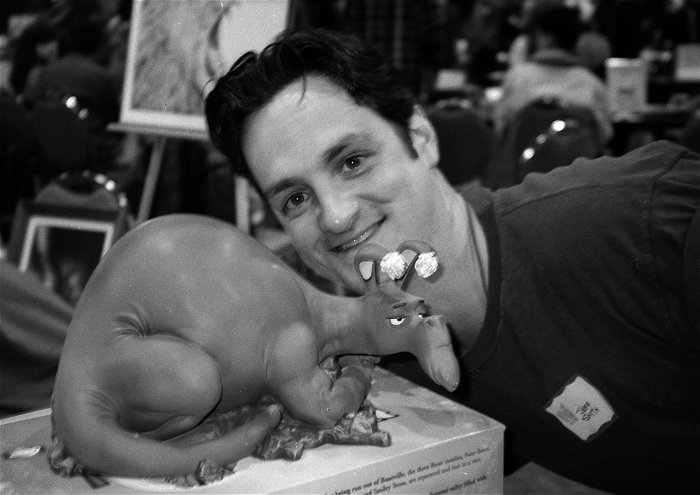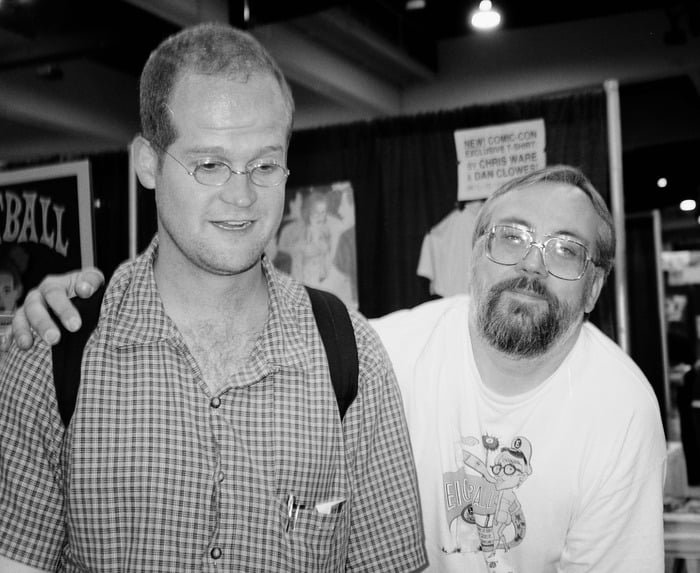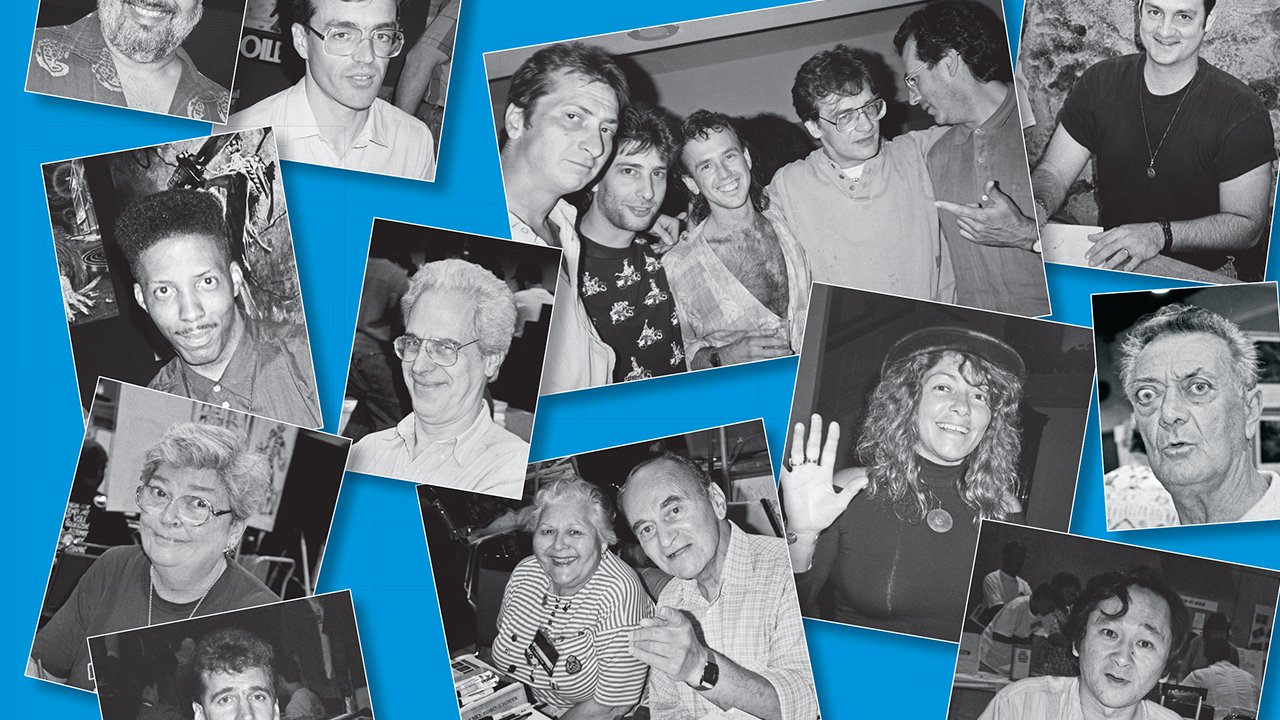Photos are a great way to document the events that happen around us, and for Jackie Estrada she has combined her love for comics and pop culture into her photography.
Estrada and her family had lived in many places due to her father being in the Navy as a musician and band conductor, before moving to and settling in San Diego in the 1950’s. During that time she attended Chula Vista and then San Diego State University where she earned her degree in Journalism.
Her journey in photography began when she studied it as a journalism major, and learned how to use all sorts of camera equipment.
“I got more serious about my photography in the mid-1970s and took many courses. At one point I set up my own darkroom and developed all the negatives and made prints myself. Although I had been taking pictures at the San Diego Con in the mid-1970s, I didn’t get serious until around 1978 and shot hundreds of pictures each year for many years. I also photographed the local punk rock scene during this period and have lots of great photos from that,” Estrada said.

Estrada’s photographs from the conventions, would eventually be the inspiration that would materialize into a book called Comic Book People: Photographs from the 1970s and 1980s, which was published last year through her publishing company Exhibit A Press. Estrada owns the company with her husband Cartoonist Batton Lash.
“The book consisted of photos I had taken at conventions in those two early decades along with personal commentary on each photo. The Kickstarter was very successful and the book was well received. But people kept asking when I was going to publish photos from the 1990s, so I am doing Comic People 2: Photographs from the 1990’s by popular demand,” said Estrada.
As Estrada put Comic People 2: Photographs from the 1990’s together she experienced a new hurdle.
“The biggest challenge is having all the negatives digitized and then going through all the photo files to choose the ones for the book. The negatives were not organized, as I had them in drawers, closets, and shoe boxes around the house so I often need help in identifying people and years. To do that I will post photos on Facebook or send them to knowledgeable folks via email, hoping someone will help me remember who everyone is and where they were when I captured the image,” she said.
Despite the challenge, Estrada shared what makes Comic People 2: Photographs from the 1990’s unique.

“It really gives some insight on what was happening in comics in the 1990s. That was a pivotal decade. In that period we saw the creation and rise of Image and the addition of lots more publishers doing cool stuff, such as Dark Horse and Oni, along with DC’s Vertigo imprint. It was also the blossoming of the self-publishing movement, with creators like Dave Sim, Jeff Smith, Terry Moore, Colleen Doran, and Carla Speed McNeil coming to the fore. It was also a great decade for the indie and small press publishers like Fantagraphics, Drawn & Quarterly, NBM, Kitchen Sink, Eclipse, Renegade, and Slave Labor.”
Estrada mentioned that it will also have lots of photos in the book that was taken at small press shows such as APE and SPX.
“The 1990s were the era of Sandman, Sin City, From Hell, Spawn, Bone, Grendel, Cerebus, Nexus, Groo, Simpsons Comics, Eightball, Hate, Naughty Bits, Marvels, Milk & Cheese, Understanding Comics, Usagi Yojimbo, 300, Desert Peach, Strangers in Paradise, Castle Waiting, Nexus, Too Much Coffee Man, Flaming Carrot, Hellboy, Acme Novelty Library, Madman, Scary Godmother, Astro City, Stray Bullets, Preacher, Concrete, Ranma 1/2, Don Rosa’s Uncle Scrooge I could go on and on there was so much good stuff,” Estrada said.

“Of course there were still plenty of mainstream superhero comics coming out from Marvel and DC, and the top creators were at the San Diego Comic-Con and other big shows. I also took photos at WonderCon and the Chicago Comic Con during this period. We were also blessed to still have many Golden and Silver Age creators with us, and I was able to photograph such giants of the field as Will Eisner, Jack Kirby, Stan Lee, Martin Nodell, Al Williamson, Sheldon Moldoff, Bob Kane, Gene Colan, Marie Severin, Irwin Hasen, Harry Lampert, Ric Estrada, Bill Ward, Ramona Fradon, Nick Cardy, Carmine Infantino, John Buscema, and Frank Frazetta. So the book will really be a snapshot of all the aspects of that wonderful decade.”
To shoot the photographs contained in the book, Estrada used a Canon F-1 SLR with various lenses and flash equipment.
Estrada said she is unsure if there will be a third book in the works because in early 2000 she had switched to digital point-and-shoot cameras because she didn’t have the time to keep up with her photography.

“I took a lot fewer photos at shows because I was working a booth the whole time. So I’m not sure if I have enough really good shots to justify a book focusing on that decade. However, I might do another book that includes other photos from the 1970s-1990s that cover different aspects of the comics industry and not just focus on individual people. I still have thousands of photos no one has seen.”
Estrada expressed what she hopes that readers will experience when they go through Comic Book People 2: Photographs from the 1990’s.
“I think they will enjoy seeing what their favorite creators looked like back then and reading my insider anecdotes about the people. If they attended shows at the time, it will bring back great memories. If they didn’t, they will get a glimpse at what cons were like back before they because such huge pop culture events.”
Estrada leaves us with this very simple but meaningful message. “Comics are great, but the people who make comics are even greater.”



